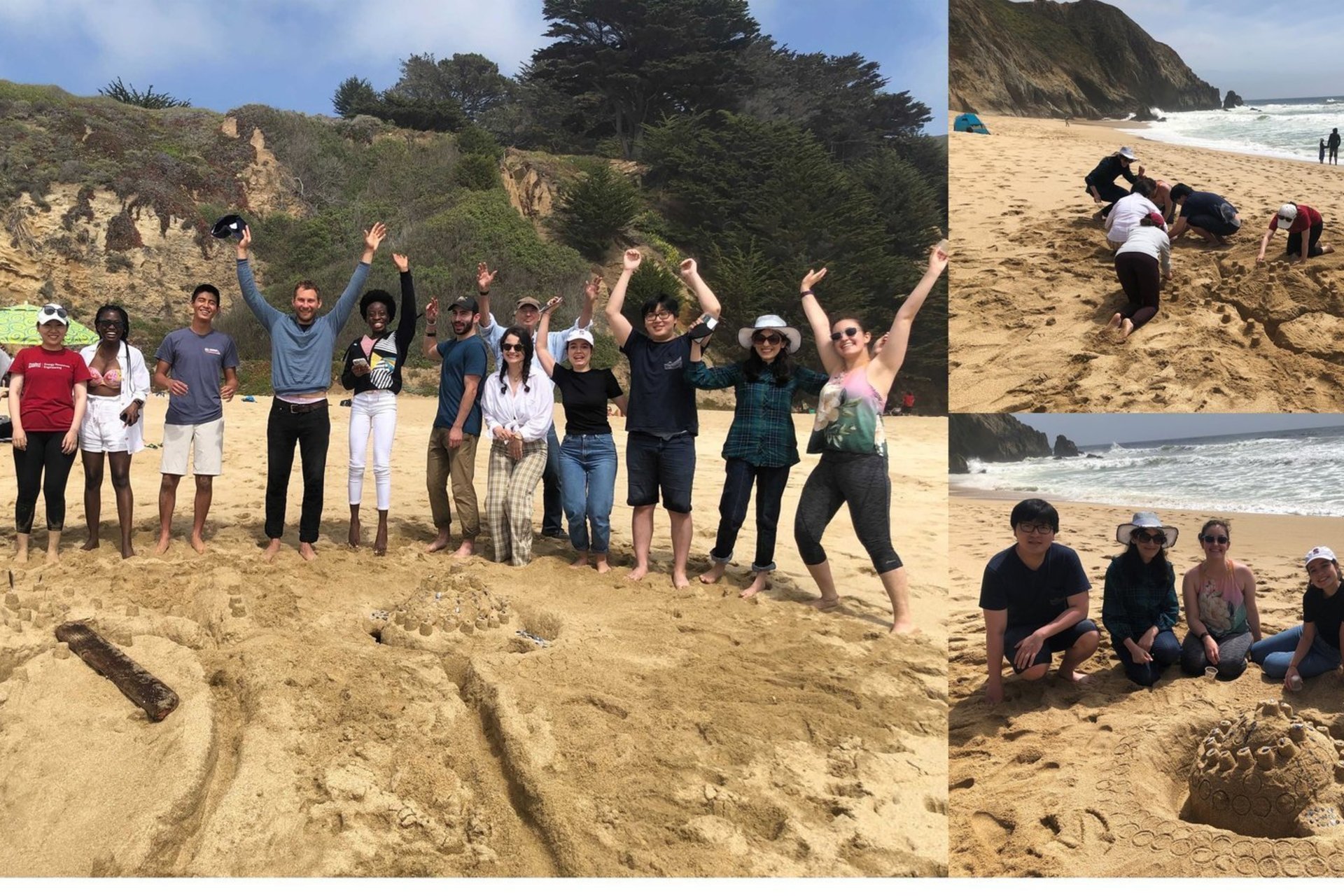Hydrogen Economy

Hydrogen Focus Area
We are in the midst of a global energy transformation driven by climate concerns, disruptive advances in renewable energy, the enabling power of data and the digital revolution, and the merging of traditional industrial sectors. Future energy systems will have many requirements: Low carbon, resilient and reliable, globally transportable, affordable, safe, and suitable for stationary and mobile applications from light duty to heavy duty. Hydrogen and electricity, renewably generated, as well as fossil fuels with CO2 capture are attractive contenders. CO2 capture for mobile applications is difficult, leaving hydrogen and electricity as the current main contenders for sustainable transportation fuels. Hydrogen is also being considered for long duration energy storage and as an energy carrier for regions of the world with an abundance of renewably generated electricity Against this backdrop, Stanford is conducting research on hydrogen as a future fuel to understand its ability to meet current and future energy requirements, identify its gaps, and compare its supply and value chain with other fuels. Active research areas include Hydrogen generation, storage, transportation, distribution and utilization applications. Learn more
Project Topics
Benson Lab

The Benson Lab is a research group in the department of Energy Resources Engineering. We investigate fundamental characteristics of carbon dioxide storage in geologic formations as well as low-carbon energy system modeling and optimization as means of climate change mitigation.
Jaramillo Group

Recent years have seen an unprecedented motivation for the emergence of new energy technologies. Global dependence on fossil fuels, however, will persist until alternate technologies can compete economically. We must develop means to produce energy (or energy carriers) from renewable sources and then convert them to work as efficiently and cleanly as possible. Catalysis is energy conversion, and the Jaramillo laboratory focuses on fundamental catalytic processes occurring on solid-state surfaces in both the production and consumption of energy. Chemical-to-electrical and electrical-to-chemical energy conversion are at the core of the research. Nanoparticles, metals, alloys, sulfides, nitrides, carbides, phosphides, oxides, and biomimetic organo-metallic complexes comprise the toolkit of materials that can help change the energy landscape. Tailoring catalyst surfaces to fit the chemistry is our primary challenge.
Xia Lab

The group is interested in the design, synthesis, and manipulation of novel organic and polymeric materials. They use a combination of organic and polymer chemistry, catalysis, and advanced characterizations to create, control, and investigate unusual (macro) molecular structures and organic materials with tailored conformations nanostructures, properties, and functions, which advance our fundamental understanding of emerging topics in chemistry and polymer science as well as target important technological applications.
Find Courses
Related Publications
- Zoback, Mark, and Dirk Smit. “Meeting the Challenges of Large-Scale Carbon Storage and Hydrogen Production”, PNAS, 120, no. 11 (March 6, 2023). https://doi.org/doi: 10.1073/pnas.2202397120.
- Boness PhD, Naomi. “The Interplay of Hydrogen and Natural Gas”, Energy Dialogues.
- M., Boutin Wang Lin Mesnage Mendoza Lassalle-Kaiser Hahn Jaramillo Robert. “Aqueous Electrochemical Reduction of Carbon Dioxide and Carbon Monoxide into Methanol With Cobalt Phthalocyanine”.
- F., King Hubert Capuano Manco Danilovic Valle Hellstern Ayers Jaramillo. “A Non-Precious Metal Hydrogen Catalyst in a Commercial Polymer Electrolyte Membrane Electrolyser”.
- F., Sanchez Hellstern King Jaramillo. “Surface Engineering of 3D Gas Diffusion Electrodes for High-Performance H-2 Production With Nonprecious Metal Catalysts”.
- F., Gauthier King Stults Flores Kibsgaard Regmi Chan Jaramillo. “Transition Metal Arsenide Catalysts for the Hydrogen Evolution Reaction”.
- F., Britto Young Yang Steiner LaFehr Friedman Beard Deutsch Jaramillo. “Interfacial Engineering of Gallium Indium Phosphide Photoelectrodes for Hydrogen Evolution With Precious Metal and Non-Precious Metal Based Catalysts”.
- F., Andersen Colic Yang Schwalbe Nielander McEnaney Enemark-Rasmussen Baker Singh Rohr Statt Blair Mezzavilla Kibsgaard Vesborg Cargnello Bent. “A Rigorous Electrochemical Ammonia Synthesis Protocol With Quantitative Isotope Measurements”..
- H., De Luna Hahn Higgins Jaffer Jaramillo Sargent. “What Would It Take for Renewably Powered Electrosynthesis to Displace Petrochemical Processes?”.
- Powell, Joseph, Naomi Boness, D’Arcy Biddle Seamon, Jim Chen, and Justin Bracci. “Workshop Brief: Decarbonizing Heavy-Duty Transportation”, Stanford Energy.
- T., Nielander McEnaney Schwalbe Baker Blair Wang Pelton Andersen Enemark-Rasmussen Colic Yang Bent Cargnello Kibsgaard Vesborg Chorkendorff Jaramillo. “A Versatile Method for Ammonia Detection in a Range of Relevant Electrolytes via Direct Nuclear Magnetic Resonance Techniques”.
- F., Boyd Latimer Dickens Nielander Hahn Norskov Higgins Jaramillo. “Electro-Oxidation of Methane on Platinum under Ambient Conditions”.
- T., Clark Ringe Tang Walton Hahn Jaramillo Chan Bell. “Influence of Atomic Surface Structure on the Activity of Ag for the Electrochemical Reduction of CO2 to CO ”.
- M., Schwalbe Singh Rohr Statt Nielander McEnaney Andersen Colic Yang Chorkendorff Jaramillo Norskov Cargnello. “Proton Control in Electrochemical Ammonia Synthesis”.
- H., You Tang Tsai Abild-Pedersen Zheng Li. “Enhancing Electrocatalytic Water Splitting by Strain Engineering”.
- X, Shi Fields Park McEnaney Yan Zhang Tsai Jaramillo Sinclair Norskov Zheng. “Rapid Flame Doping of Co to WS2 for Efficient Hydrogen Evolution”.
- F., Britto Benck Young Hahn Deutsch Jaramillo. “Molybdenum Disulfide As a Protection Layer and Catalyst for Gallium Indium Phosphide Solar Water Splitting Photocathodes”.
- Hamburg, Lyon D.R. R.A. Alvarez Zavala-Araiza A.R. Brandt R.B. Jackson S.P. “Aerial Surveys of Elevated Hydrocarbon Emissions from Oil and Gas Production Sites”. 50 (February 2016): 4877-86.


